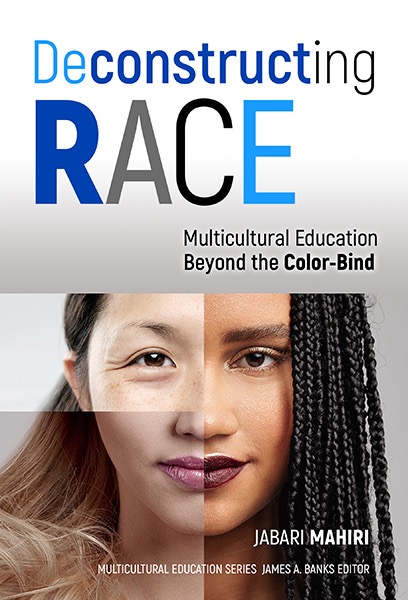
Deconstructing Race - Multicultural Education Beyond the Color-Blind
Date Reviewed: March 22, 2018
Deconstructing Race is a book written by a teacher to other teachers. It combines empirical data with critical race theory and pedagogical research with three objectives: at the theoretical level, the book offers teachers an overview of applied critical race theory; at the pedagogical level, Mahiri offers a wide sample of ethnographic data (mostly interviews) and literary analysis (Chapter 2) that both inform and illustrate the theoretical framework; third, and perhaps most importantly, Deconstructing Race offers an alternative framework “beyond the Color-Bind.” Aptly drawing on Derrida’s work, Mahiri diagnoses that “rapidly changing micro-cultural identities and practices of individuals cannot be contained in the static racial categories assigned by white supremacy” (7). The author advances the notion of “micro-cultures” to account for the myriad ways in which subjects assume different cultural positions, practices, choices, and perspectives. The hyphen in the expression seeks to underline the experience of multicultural individuals who always live in-between.
The theoretical apparatus (Chapters 1, 2, 3, and 9) sandwiches a set of five chapters in which the author exemplifies the inadequacy of racial categories by presenting several interviews grouped according to the five official categories of race (briefly presented in chapter 3). The wealth of interviews and testimonies cannot be summarized here, but they all point to how institutionalized racial categorizations completely miss the mark as descriptors of identity. The ethnographical data amply demonstrates in turn that identitarian “boxes” cannot be decided in advance and theoretical notions need to be sharpened to reflect what Mahiri calls the phenomenon of hyperdiversity.
For educators in the fields of theology, religious studies, or multicultural ministry, the main appeal of this contribution may reside precisely in the richness of its ethnographical survey and, more specifically, in the testimonies of subjects classified within a certain race. Their experiences push racial categories to come undone in favor of other “ancestral, ethnic, and national origin identifications” (78). Furthermore, this new construction of identities, Mahiri explores, is performed through digital media where subjects negotiate real-world and virtual identities – subverting the former by performing new identifications in the latter. From this standpoint, Deconstructing Race offers a glimpse of what resistance looks like in the age of digital media.
Whereas the ethnographic account is definitely the book’s main strength, its theoretical framework calls for further elaboration. Mahiri takes a descriptive approach to ethnographic analysis with the subsequent advantage of presenting the experiences of the interviewed subjects in their rich complexity. However, self-descriptions are not sufficiently analyzed. For instance, to what extent is the emphatic insistence on the notion of “identity” (regardless of the axes that define it) not itself a philosophical project in need of deconstruction? How might a more robust analysis of contemporary capitalism – a concept mentioned a couple of times in passing but that names the cause, one might argue, of mass population movements that inform the identities presented – inform alternative racial imaginaries?